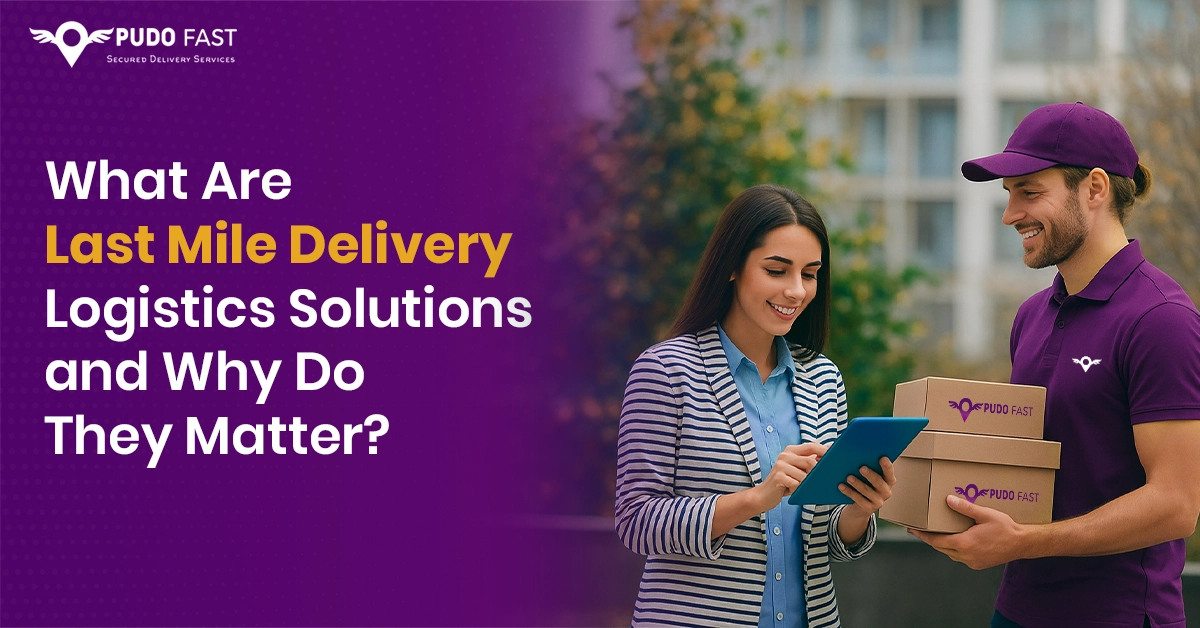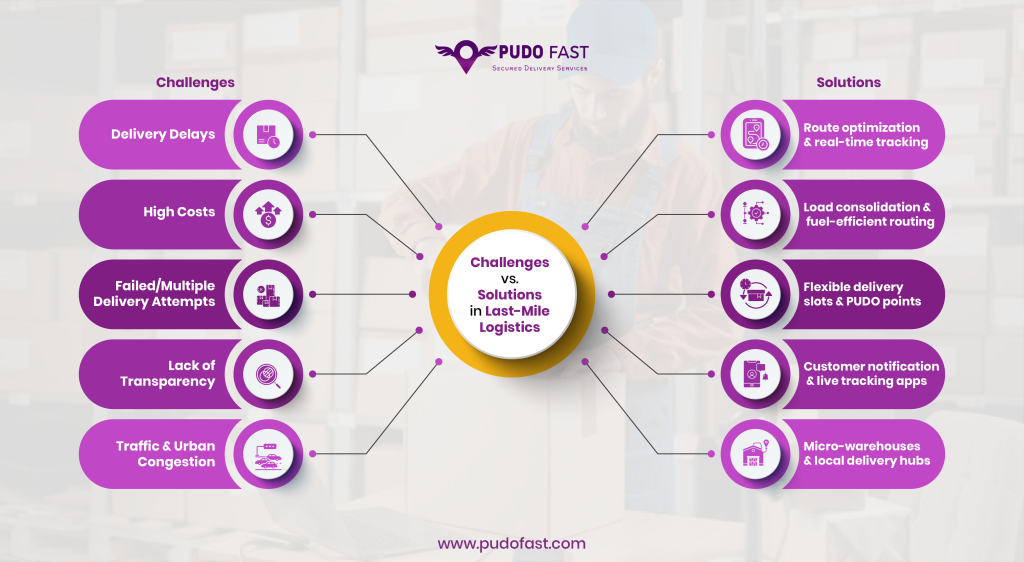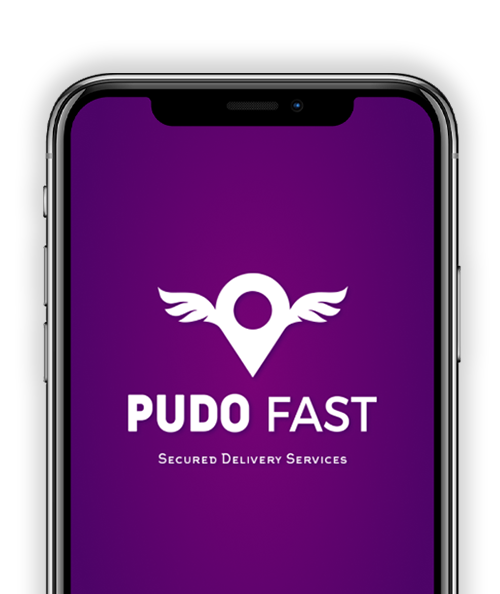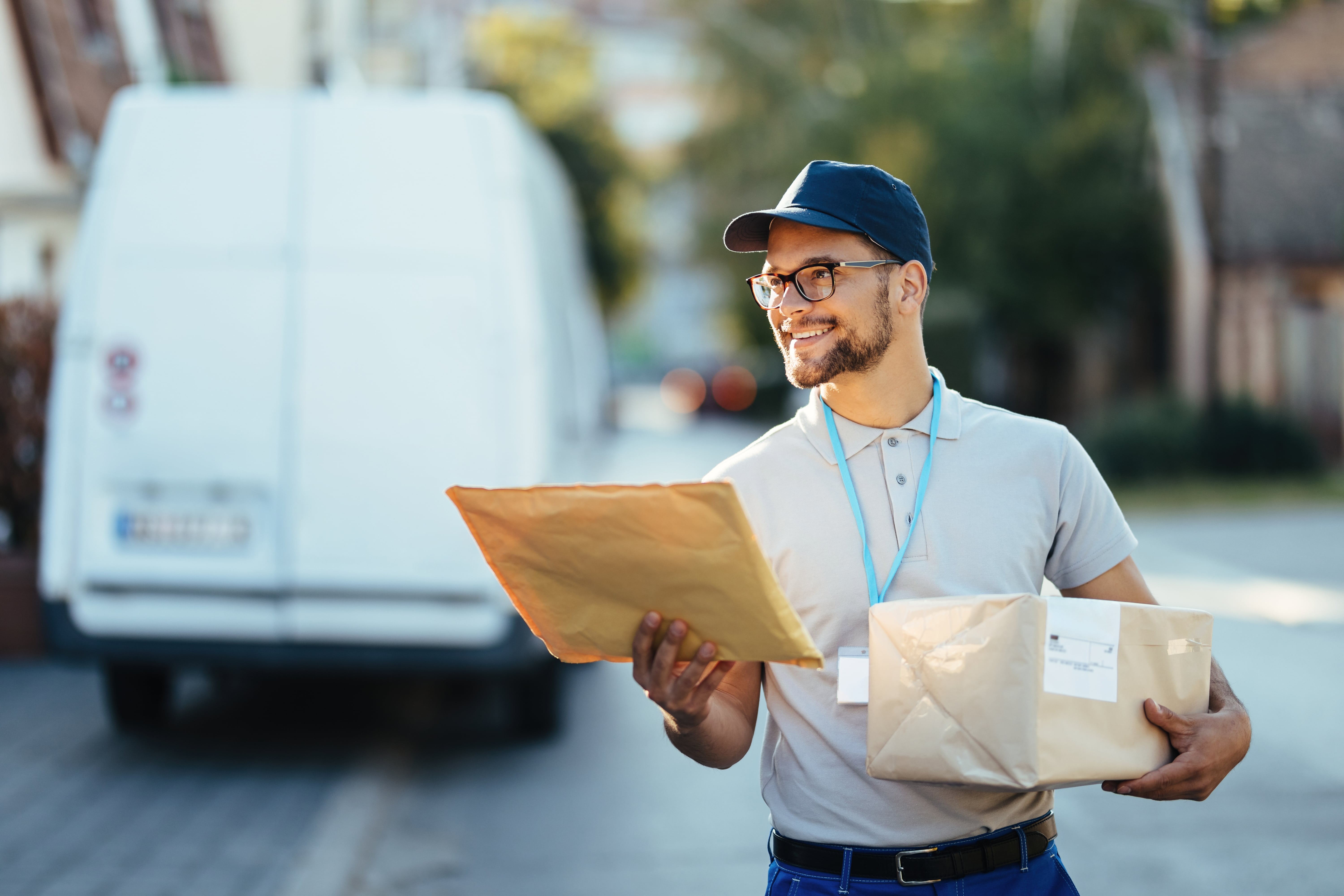
If you decided to step off any apartment building in New York City at the end of the day, you would be a witness to the packages going in and out of the ship-holes, being left on the stairs or placed on the rails. Only some of them will be retrieved by the owners. The last mile, the stage where the shipping of a product from a warehouse to the customer’s hands, is the part of the logistics process that is the hardest and most personal one. The last mile is that stage, and the customer’s experience of whether they feel confident or frustrated usually depends on how it was handled.
Introduction to Last Mile Delivery and Its Role in Logistics
Last mile delivery is the last link in the supply chain. The last mile delivery refers to the distance from the warehouse to a customer’s place, be it a house, an office, or a store. The emphasis on the point of last mile delivery cannot be overestimated. Customers demand accuracy, expediency, and security. Just one lost package or stolen delivery will not only lead to the loss of one order but also to the destruction of customers’ trust in the brand in the long term.
In New York, as well as in other cities with high population density, the last mile is not only the distance but also the time, the number of traffic lights, and the security risks. For this reason, delivery companies are not taking a traditional approach and are rather looking at the problem through a different perspective.
Importance of Last Mile Delivery Logistics Solutions
Logistics solutions for last mile delivery are the processes and equipment that facilitate the delivery of a product from a business to the final destination. Such technologies can be smart delivery, controlled delivery, route optimization, or delivery window.
These services imply that people living in urban areas with busy schedules, small businesses, and families are not forced to change their timetable just to meet a delivery person. In other words, the delivery fits into the customer’s life instead of the delivery dictating the customer’s life.
Benefits of Implementing Last Mile Delivery Solutions
One can’t mention last mile delivery solutions and not think about the key benefits of their implementation
The benefits are evident to both businesses and households alike.
- Convenience:
Customers can choose the most suitable time for delivery, during their lunch break or after office hours. Small businesses will also benefit from this, as it will cut downtime caused by waiting for packages, which in turn will make the business flow uninterruptedly.
- Security:
Technologies such as lockbox technology, one-time passwords, or verified handoffs that go hand in hand with secure delivery methods are ways to fight against the porch piracy menace. In a city where packages left unattended are often gone within minutes, this type of delivery is not only a feature; it’s a necessity.
- Speed:
By combining route savvy with adaptable delivery models, package getting will be quicker, and there will be fewer waiting times. In addition, in the case of time-limited goods such as food and medicines, this pace can be the deciding factor.
- Transparency:
Package tracking technologies allow customers to see their package from the moment it is sent until it is delivered to them. Hence, it is not simply a delivery of the package but also a stress-relieving process due to the lack of the feeling of uncertainty.
In conclusion, if parcel carriers find the right last mile logistics solutions, they will not only perform their function of delivering your parcels, but they will also provide you with peace of mind.
Common Challenges in Last Mile Delivery Operations
Though there has been significant progress, last mile delivery is still the most expensive and unpredictable part of the logistics process. Some of the most typical problems are:
- Traffic jams in cities:
In Manhattan, what should have been a 10-minute delivery is now extended to an hour. Drivers need to have the possibility to change their routes as well as get instant updates in order to be able to adjust.
- Unsuccessful delivery attempts:
When a package is not delivered for the first time, the transportation costs are automatically doubled, along with the fuel and driver’s time. This waste is a major reason for the logistics providers to lose money.
- Package security:
The number of thefts from porches of houses is growing in all the cities of the U.S.. Packages left unattended cause anxiety to customers and generate losses for companies.
- Pressure on prices:
It is more expensive to deliver a package of shorter distance as the cost per package is higher. Enterprises face the challenge of balancing the quality of services and the delivery expenses that keep increasing.
That is the reason why a lot of companies are investing in delivery management systems that help them to handle routes, drivers, and customer communication together on one platform.
Challenges vs Solutions in Last Mile Logistics

How Smart Logistics Technology Is Transforming Last Mile Delivery
Intelligent logistics technology is doing a great job of changing the last mile from a labor-intensive process to a data-driven operation. To illustrate this:
- Predictive analytics is able to project delivery demand, which helps companies to put on the weight of the drivers who are next to jangle the most.
- Automated proof-of-delivery systems help in reducing conflicts, besides speeding up the process of verification.
- AI-powered scheduling tools guide the client to the selected time when the courier is close by, which results in fewer failed attempts.
From the point of view of consumers, these technological innovations come with no doubt about the advantages. It means that they get the packages more securely and are provided with timely updates and accessibility in terms of the delivery period. For companies, efficiency increases alongside cost savings.
Role of Route Optimization in Efficient Deliveries
Urban deliveries are not only about acceleration, but also about accuracy. Last mile optimization can help the driver dodge traffic rubble, cluster deliveries by area, and cut down miles that are not serving.
For instance, consider that there are two delivery drivers: One is working from a static list, while the second is using a system that updates the quickest route every time in real-time. The optimized driver reaches more destinations in less time, thus he saves not only fuel but also labor. After hundreds of delivery rounds a day, the difference is massive both at the financial and the environmental level.
Importance of Real-Time Tracking and Visibility
Imagine ordering something important, like medicine or business supplies, and having no idea when it will arrive. That uncertainty is why delivery tracking solutions have become essential.
Real-time visibility allows customers to:
- Follow a package’s journey through GPS.
- Reroute a delivery to another location if plans change.
- Receive alerts if delays occur, avoiding frustration.
In PUDO Fast’s case, live GPS tracking ensures customers never have to wonder if their package is “out for delivery” all day. They know exactly when it’s arriving, which makes scheduling around busy lives much easier.
How Last Mile Delivery Solutions Improve Customer Satisfaction
A smooth delivery experience often matters more than price. In eCommerce last mile delivery, customers will forgive a delay if they feel informed and secure. But one lost package or a missed delivery window can erode loyalty instantly.
Secure delivery models, such as encrypted lockboxes and OTP verification, create a sense of trust. Customers know their package will arrive when promised and that only they can access it. In effect, the final mile delivery service becomes part of the overall brand experience, shaping whether customers return or look elsewhere.
Cost-Effective Strategies for Last Mile Delivery
The biggest test that logistics face is the balancing of cost and quality. To both allow themselves and the customers to benefit from such an approach, businesses and providers are implementing various strategies to maintain costs at manageable levels without the service being compromised:
- Flexible delivery slots:
When customers are provided with the practical choice of delivery time windows, companies cut cancellations that not only save costs but also reduce the customer’s frustration simultaneously.
- On-demand delivery logistics:
Instead of having a large fixed fleet, businesses are using more drivers during peak periods. They are thus not paying for the idle vehicles and at the same time are able to adjust the number of drivers according to the seasonal variations without any long-term overhead.
- Advanced logistics software solutions:
Automated planning can take care of traffic, distance, and driver capacity planning, and also effectively allow the scheduling of multiple stops. This saves money on administrative labor and also reduces inefficiencies that customers pay dearly for.
- Collaborative delivery models:
Multiple businesses in dense areas, such as NYC, can share resources that allow them to reduce the money spent on each package while at the same time increasing the delivery density per route, lowering delivery costs.
These strategies have made it possible to offer decent services without the logistics manager having to worry about them affecting their profit margins, a problem that every one of them faces.
Future Trends in Last Mile Logistics and Supply Chain Management
The last mile is going to change a lot as the consumers’ demands will keep evolving. Here are some trends to expect:
- More widespread use of on-demand delivery logistics:
The network of drivers that can be adapted to the changing needs will include more drivers to meet the growing demand for same-day or even one-hour deliveries.
- The use of logistics systems in the retail world:
It will be easy for customers to get information about their shipped goods by the use of logistics software directly connected to eCommerce platforms to get real-time updates.
- Models for sustainability in the delivery:
Electric vans, cargo bikes, and micro-fulfillment centers will be part of the last mile delivery system to decrease the impact on the environment and traffic congestion.
- Innovations for customers first:
There will be advanced delivery management systems that will allow growth in encrypted delivery methods, real-time communication, and personalized delivery preferences.
Those companies that understand the last mile not only as a cost center but as the moment of customer loyalty, as the point where customer loyalty is gained or lost, will be the ones that conquer the future.
Closing Insight
The last mile is the stage when logistics meet reality. It is where expectations are either fulfilled or disappointed. Businesses that focus on the last mile are not merely shipping items; they are earning trust and loyalty, and that is all in line with the concept of a faster, smarter world.
That’s also what makes last mile delivery logistics solutions necessary. They are not only about the packages being moved, but they are also about making sure people keep living their busy lives without having to worry that their deliveries will keep up with them.




